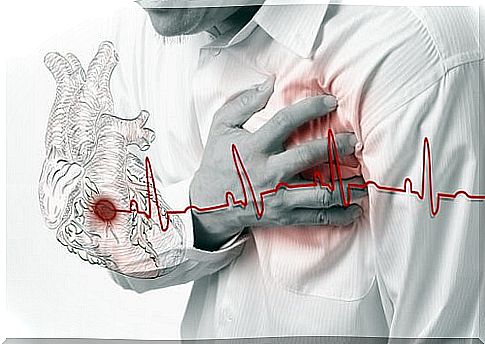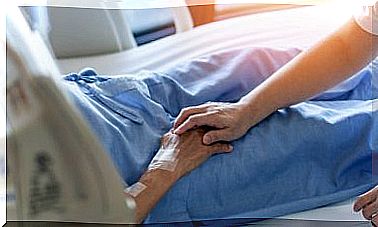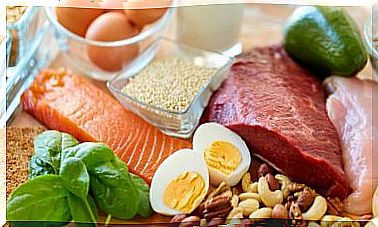How To Recognize The Differences Between A Heart Attack, Cardiac Arrest And Stroke
Whereas with heart attack and stroke you never lose consciousness, cardiac arrest implies a respiratory arrest and a loss of consciousness.

Surely, you have heard all the words in the title very often. However, you may not be clear about what they mean. For this reason, we invite you to discover the differences between heart attack and cardiac arrest, and these diseases and a stroke.
Next, we will explain in detail what these health problems consist of. You will also know the risk factors that influence all of them. After all, information is power!
What is a heart attack?
In the case of myocardial infarction, known colloquially as a heart attack, there is a problem in the coronary artery. The United States National Library of Medicine explains that it occurs when the blood flow that carries oxygen to the heart is blocked.
This situation is usually related to the presence of a clot, frequently formed by the detachment of an atheroma plaque. Blocking blood to the heart causes irregularities in the heartbeat (arrhythmias). Also, respiratory distress and chest pain appear that can radiate to the left part of the body, among other symptoms.
What is cardiac arrest?
In this case, according to data from the Medical Encyclopedia mentioned above, the heart suddenly stops beating. Who suffers a cardiac arrest, suffers a fainting and a respiratory arrest.
Therefore, the treatment must be immediate since if not, it leads to death. It will require immediate cardiopulmonary resuscitation, until defibrillation is possible. This treatment sends an electric shock to restore a normal heart rhythm.
Those who have already suffered cardiac arrest can have a defibrillator surgically placed. This would reduce the risk of death in the event of another stop.
Differences between heart attack and cardiac arrest
Now that it is clear which disease each name refers to, it is time to learn about the main differences between heart attack and cardiac arrest.
In both cases, the person requires urgent attention. However, cardiac arrest is more serious since the person loses consciousness immediately, does not have a pulse, and does not breathe; that is to say, you are in imminent risk of death.
Heart attack, on the other hand, must be treated as soon as possible since, if not, in a few hours it can cause the death of the affected organ. It is interesting to note that the person who suffers a heart attack does not lose consciousness at any time and, on the contrary, suffers acute pain.
It is worth noting that most people with cardiac arrest have no symptoms until they lose consciousness. However, in some cases they may feel dizzy, short of breath, nausea or vomiting, chest pain, and a racing heartbeat.
What is a stroke?
Stroke, also known as a stroke, stroke, stroke or cerebral infarction, is a medical emergency as the brain can stop oxygenated and, therefore, lose functions and even lead to death. There are two types of stroke:
- Ischemic : it is the most frequent. It represents 85% of all strokes. It is a cerebral infarction caused by a thrombus that prevents the correct blood supply to the brain. After a few minutes, some parts of the brain can begin to die due to lack of oxygen and nutrients, as is well pointed out on the MedlinePlus medical website.
- Hemorrhagic : it is less frequent and the mortality rate is considerably higher. The MSD Manual in its article Introduction to hemorrhagic strokes (strokes or hemorrhagic strokes) addresses that bleeding is caused by the rupture of a blood vessel due to the presence of abnormal or weak blood vessels, or an unusual pressure on them .
Differences between heart attack and cardiac arrest and stroke
The main difference between these three diseases is that stroke occurs in the brain, while heart attack and cardiac arrest attack the heart.
In the case of heart attack and ischemic stroke, the greatest similarity is found in the cause : in both cases a thrombus hinders or prevents the passage of blood and when there is a lack of oxygen in the organ, it begins to die.
Diet-related risk factors
There are some common risk factors for the three conditions that it is important to know to prevent different vascular diseases, especially in the case of having a family history:
- Arterial hypertension: it is essential to control it regularly. The doctor must determine the appropriate treatment based on the pressure values.
- Excessive consumption of harmful fats: fat is an essential nutrient for health but it must be of good quality. The regular consumption of fats of vegetable origin is recommended. For example: olive oil, flax oil, coconut oil, avocado, nuts, etc.
- High cholesterol and triglycerides: analytics report on these levels that can be improved with a good diet. The excess of these fats is deposited on the walls of the arteries and could form atheroma plaques. Different studies suggest that these are susceptible to break off and form thrombi.
- Diabetes : it is one of the risk factors for ischemic stroke indicated by research published in The American Journal of the Medical Sciences .
- Obesity : experts recommend eating a healthy diet to maintain an adequate weight since being overweight would multiply the risk of cardiovascular problems.
Other risk factors
- Sedentary : today, it is known that it is essential to exercise. You can do a little bit each day. For example, going up and down stairs, walking or doing a sport two or three times a week.
- Smoking : it is essential to reduce this bad habit, not only to protect coronary health but also to avoid other health problems.
- Stress : stress influences health and is directly related, for example, to cholesterol levels, according to data published in the Journal of Medicine .
Prevention is better than cure
Now that you know which are the most important cardiovascular conditions and how to differentiate them, you can be attentive to any suspicious symptoms that may be associated with some of the indicated pathologies.
Of course, there is no better remedy than good prevention. Therefore, you visit the doctor regularly, take regular tests, and lead a healthy life based on good eating habits and regular exercise.








